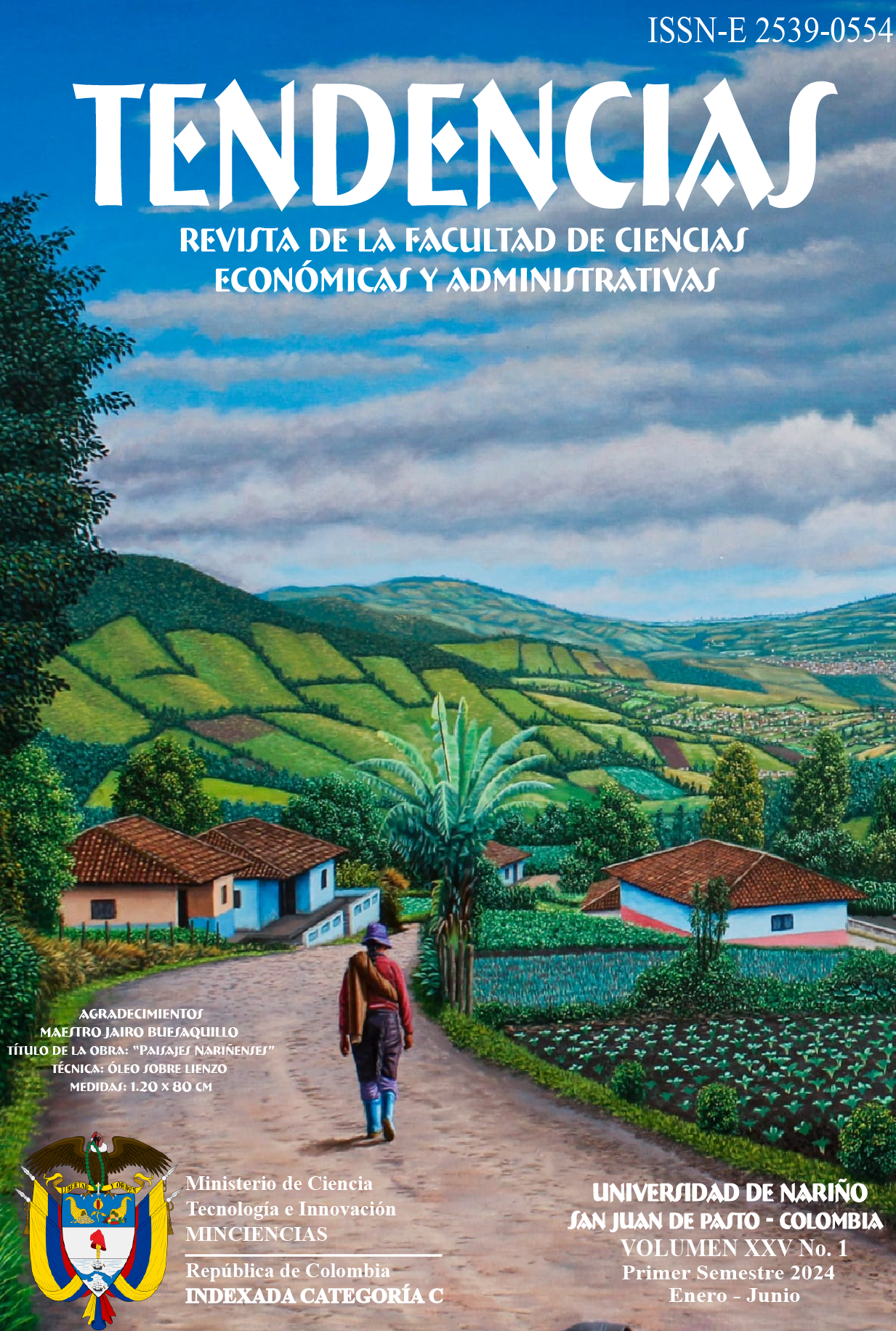Remote work as the main attraction in job offers: a consequence of the COVID-19
DOI:
https://doi.org/10.22267/rtend.242501.251Keywords:
conditions of employment, hiring, employment, supply and demand, pandemic, job satisfactionAbstract
As a consequence of the pandemic caused by COVID-19, some companies were forced to carry out their operations remotely, in order to face quarantine without putting their business at risk. After a year and a half, companies have begun to ask their employees to return to the office, but some of them have decided to resign before returning to work 100% in person, a phenomenon that has been called «the Great Resignation» which has increased unemployment and, at the same time, has generated a change in the preference of candidates when responding to job offers. The objective of this study focuses on exploring through a survey the preferences of employees and candidates in the options that job offers may present in terms of the remote work modality. The main finding is that more than 48% want to choose what percentage of their work will be remote and which one will not and, additionally, it was found that more than 84% of the studied sample would be interested in a job offer that provides remote work with any of its alternatives.
Downloads
References
(1) ACyV. (2022, 6 de agosto). Por qué cada vez más personas quieren trabajar desde casa. El Confidencial. https://www.elconfidencial.com/alma-corazon-vida/2022-08-06/cada-vez-personas-trabajar-desde-casa_3469717/
(2) Aquije, C. P. (2018). Home office como estrategia para la motivación y eficiencia organizacional. Palermo Business, (18), 337–351.
(3) Berkun, S. (2013). The year without pants: wordpress.com and the future of work. Jossey-Bass Inc.
(4) Bermúdez, Á. (2021, 29 de junio). "La Gran Renuncia": por qué los trabajadores en Estados Unidos están dejando sus empleos a un ritmo récord. BBC News Mundo. https://www.bbc.com/mundo/noticias-57645362
(5) Burkus, D. (2021). Leading from anywhere: unlock the power and performance of remote teams. Nicholas Brealey Publishing.
(6) Dickler, J. (2021). For better or worse, working from home is here to stay. CNBC. https://www.cnbc.com/2021/03/11/one-year-into-covid-working-from-home-is-here-to-stay.html
(7) Fernández, M. B. (2021). El teletrabajo en España antes, durante y después del confinamiento domiciliario. Revista Internacional y Comparada de Relaciones Laborales y Derecho del Empleo, 9(1), 377-409.
(8) Ferriss, T. (2011). The 4-hour work week: escape the 9-5, live anywhere and join the new rich. Harmony.
(9) Golden, T. D., Veiga, J. F. & Dino, R. N. (2008). The impact of professional isolation on teleworker job performance and turnover intentions: does time spent teleworking, interacting face-to-face, or having access to communication-enhancing technology matter? Journal of applied psychology, 93(6), 1412.
(10) Grant, A. & Pollock, T. (2011). From the editors publishing in AMJ—part 3: setting the hook. Academy of Management Journal, 54(5), 873–879.
(11) Heinemeier, D. & Fried, J. (2013). Remote: office not required. Vermilion.
(12) Hunt, T. (2008). The whuffie factor: using the power of social networks to build your business. Crown Pub Inc.
(13) Jalagat, R. & Jalagat, A. (2019). Rationalizing remote working concept and its implications on employee productivity. Global Journal of Advanced Research, 6(3), 95-100. https://www.researchgate.net/publication/332171842_rationalizing_remote_working_concept_and_its_implications_on_employee_productivity
(14) Joint Research Centre. (2020). Telework in the EU before and after the COVID-19: where we were. https://ec.europa.eu/jrc/sites/default/files/jrc120945_policy_brief_-_covid_and_telework_final.pdf
(15) Klotz, A. (2021). The Covid vaccine means a return to work. And a wave of resignations. For everyone exiting the pandemic feeling burned out, know you are not alone. NBC News Now. https://www.nbcnews.com/think/opinion/covid-vaccine-means-return-work-wave-resignations-ncna1269018
(16) López, P. y Fachelli, S. (2015). Metodología de la investigación social cuantitativa. Universidad Autónoma de Barcelona.
(17) Madsen, S. (2003). The effects of home‐based teleworking on work‐family conflict. Human resource development quarterly, 14(1), 35-58.
(18) Messenger, J. & Gschwind, L. (2016). Three generations of Telework: New ICTs and the (R)evolution from Home Office to Virtual Office. New Technology Work and Employment, 31(3), 195-272. https://doi.org/10.1111/ntwe.12073
(19) Morgenstern, J. (2004). Organizing from the inside out: the foolproof system for organizing your home, your office and your life. Owl Books.
(20) Mullenweg, M. (2020). Coronavirus and the remote work experiment no one asked for. https://ma.tt/category/future-of-work/
(21) Nakrošienė, A., Bučiūnienė, I. & Goštautaitė, B. (2019). Working from home: characteristics and outcomes of telework. International Journal of Manpower, 40(1), 87-101. https://doi.org/10.1108/IJM-07-2017-0172
(22) Newport, C. (2016). Deep Work. Piatkus.
(23) Nieva, R. (2021). Google employees angered by search giant's 'hypocritical' remote work policies. CNET. https://www.cnet.com/news/googles-hypocritical-remote-work-policies-anger-employees/
(24) O'Connor, B. (2021). Los empleados que se resisten a volver a la oficina pese a los llamados de sus jefes. BBC News Mundo. https://www.bbc.com/mundo/vert-cap-57476762
(25) Palazuelos, F. (2021). No podemos seguir trabajando igual. (We can't keep working the same). Hipertextual. https://hipertextual.com/2021/07/teletrabajo-cambios-modelos-laborales
(26) Pérez, L. (2023). La dicotomía en torno al teletrabajo: entre el repunte y los despidos masivos. Forbes. https://forbes.es/empresas/236900/la-dicotomia-en-torno-al-teletrabajo-entre-el-repunte-y-los-despidos-masivos/
(27) RD Station. (2020, 24 de marzo). March. Home office: qué es, cómo hacer y buenas prácticas para rendir desde tu casa. https://www.rdstation.com/co/blog/home-office/
(28) Rubin, G. (2015). Better than before: what i learned about making and breaking habits. Hodder and Stoughton.
(29) Sraders, A. & Lambert, L. (2020). Nearly 100,000 establishments that temporarily shut down due to the pandemic are now out of business. Fortune. https://fortune.com/2020/09/28/covid-buisnesses-shut-down-closed/
(30) Streitfeld, D. (2020). La larga e infeliz historia de trabajar desde casa. New York Times. https://www.nytimes.com/es/2020/07/02/espanol/negocios/trabajo-remoto.html
(31) Vanderkam, L. (2018). Off the clock: feel less busy while getting more done. Park City Portfolio.
(32) Velarde, G. (2020). El 99% de las 68.000 empresas destruidas en España por la pandemia tiene menos de 50 trabajadores. El Economista. https://www.eleconomista.es/economia/noticias/10961067/12/20/El-99-de-las-68000-empresas-destruidas-en-Espana-por-la-pandemia-tiene-menos-de-50-trabajadores.html
Downloads
Published
How to Cite
Issue
Section
License

This work is licensed under a Creative Commons Attribution-NonCommercial 4.0 International License.
Those authors who have publications with this journal, accept the following terms:
This journal is licensed under a Creative Commons Reconocimiento-NoComercial 4.0 Internacional License. The articles can be copied, distributed, adapted and communicated publicly, as long as the credits of the work are recognized and the respective source is quoted. This work can not be used for commercial purposes.
To increase their visibility, documents are sent to databases and indexing systems.
The content of the items is the responsibility of each author, and does not compromise in any way, journal or institution.







































